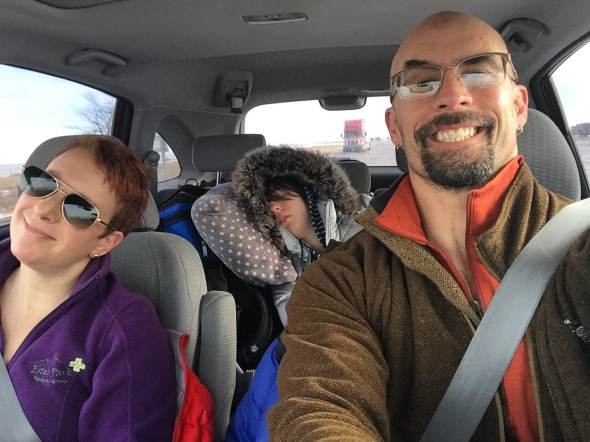 SO, A friend and colleague of mine, Olivia Damge, came into our office the other day all excited. She had a great idea for a podcast about bodies, body types, body image. It started with the common complaint among athletes that clothes don’t fit. Apparently, American clothing companies don’t deal with athletes.
SO, A friend and colleague of mine, Olivia Damge, came into our office the other day all excited. She had a great idea for a podcast about bodies, body types, body image. It started with the common complaint among athletes that clothes don’t fit. Apparently, American clothing companies don’t deal with athletes.
Olivia is an athlete, a “girlie-girl,” a student and a coach. I know this because we talk. If the average American saw her on the street, they would really have no idea how to feel. The young lady is clearly muscled, something that is not often encouraged. Many insecure men would begin making judgements and assumptions right there, even here in active, athletic Colorado. Olivia is not shy about eating, as she knows what it takes to build and maintain muscle; also very off-putting if a guy is insecure. She is very secure in herself and doesn’t really care what these folks think. But this does not mean she doesn’t face challenges in life.
This all started one day when the two of us were comparing notes about buying clothes. Being athletes, regular pants don’t fit normally. The thighs and butt are generally too small if we base fit on waist size. If we compensate for our legs, the waist gaps; not a great look. With shirts, shoulders and arms are too snug, while waists and midsections are too loose. I get crap for wearing shirts that fit my midsection, then bulge at the shoulders and arms. I will wear Lululemon “dress” pants A) because they stretch in the seat and legs, and B) because my wife likes them (this shuts down any other argument, BTW). Then there are those who make assumptions about my insecurities and possible dietary “supplements.”
This all leads back to something we in the Recovery world say often: You don’t know the battles another has faced. I can’t judge another person’s insides based on their outsides.
People will see athletes and say things like “you don’t have to worry about what you eat.” This is a silly statement. Athletes are constantly mindful of the food we eat as we know that it effects our performance, mood, sleep and our general health.
I’ve heard people make ridiculous assumptions, most often about women, concerning looking fit and healthy: she must have good genes. While genetics plays a role, dedication is more often what makes an athlete and the athletic body.
Many athletes run into trouble with eating and eating disorders as a result of society’s old-school assumptions, again particularly female athletes. Skinny is better. But it’s not! Starving does not lead to better running, vaulting, riding or lifting. Most often, it just feeds into insecure men’s notions of how a female “should” look.
This gets us to the next portion of this eventual podcast: what is an athlete’s body? I race on a bicycle, but do not have the typical cyclist’s body. I look very much like the former bodybuilder/power lifter/CrossFitter that I am. This body works wonderfully as a hockey goalie. This body is not great on my bike headed up big climbs. That does not mean I’m not an athlete or even not a cyclist, it just means other bodies are better suited for climbing. I was not the size needed for an offensive lineman or a rugby “prop,” though I played both positions. I lift fairly heavy weights, but I don’t wish to put on the weight needed to be a competitive power lifter. Again this does not make me less of an athlete, just not a competitive power lifter.
I have friends who are Highland athletes and strongman/woman competitors. They do not look like marathoners, cyclists or clothing models, and they shouldn’t. None of those more slightly-built athletes could pick up and carry 300 pounds for 100 feet in 60 seconds any better than a power athlete can run a sub-four minute mile. This does not make one or the other any more or less athletic. The average person, however, will make judgements of athleticism based on the body types.
So this is how it starts. This is primarily Olivia’s project, though I hope to contribute, as I obviously have plenty of thoughts on the subject.
In the mean time, have fun, be safe. I’m going riding!



















 The year has begun anew. Lots of folk have made resolutions, earnest declarations that, this time, it will be different. This year, I will lose weight, I will eat better, I will stop drinking, write letters, join the gym . . . etc. Some may have already fallen by the wayside. The problem is not the feeling or desire. It’s the execution.
The year has begun anew. Lots of folk have made resolutions, earnest declarations that, this time, it will be different. This year, I will lose weight, I will eat better, I will stop drinking, write letters, join the gym . . . etc. Some may have already fallen by the wayside. The problem is not the feeling or desire. It’s the execution.

 Not a lot of time, today. Let me just say, I have some reviews based on taking stuff out on multi-day rides in the last six weeks. I write about the beautiful Ride the Rockies, but did not hit upon the equipment.
Not a lot of time, today. Let me just say, I have some reviews based on taking stuff out on multi-day rides in the last six weeks. I write about the beautiful Ride the Rockies, but did not hit upon the equipment. 







